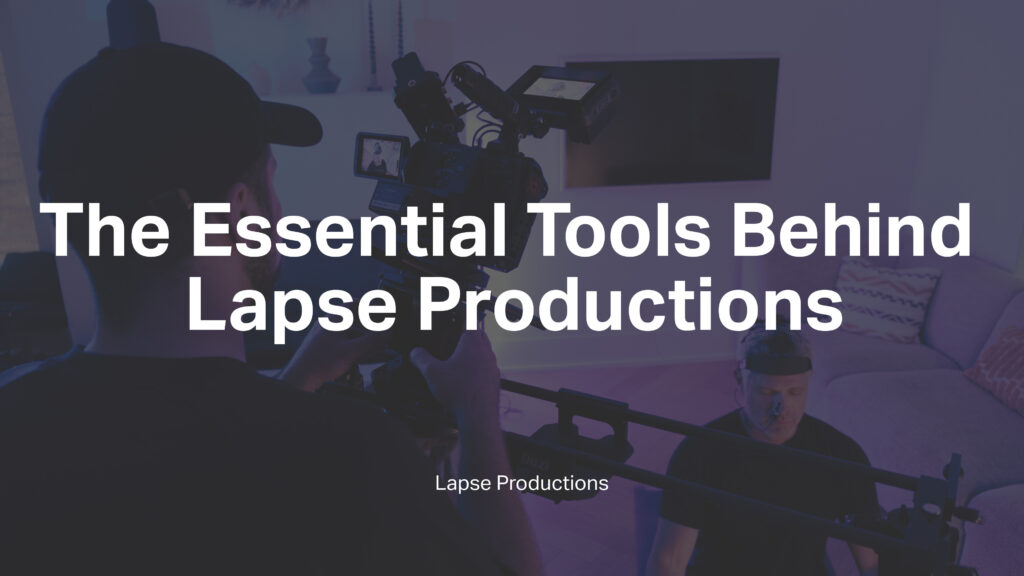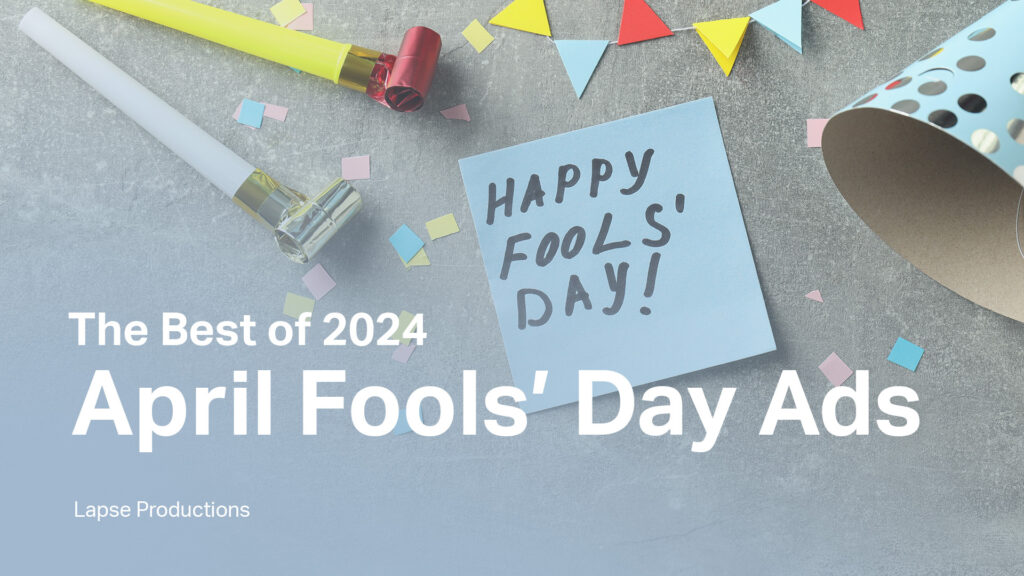YouTube SEO: Optimize Your Video to Rank Higher
Whether you are new to video marketing or a seasoned pro, YouTube SEO is crucial for getting your videos noticed. YouTube is the second-largest search engine, second only to Google, and the first largest search engine for video-related content. And just like how you would do SEO (Search Engine Optimization) work for your website, you need to do the same for your YouTube videos.
At Lapse Productions, we specialize in video creation and optimization. In this blog post, we are going to cover the best practices for YouTube SEO that can be applied across all skill levels.
YouTube Ranking Factors
Before diving into best practices, let’s clarify the factors that will help you rank your videos in YouTube SERP (Search Engine Results Page):
- Views: YouTube counts views based on specific requirements, like watching at least 30 seconds of a video. It’s a common misconception that YouTube “buys” and “sells” views; rather, views are crucial metrics for advertisers.
- Subscribers, Channel Authority: More subscribers and achieving milestones (like receiving YouTube badges) contribute to higher ranking.
- Audience Retention, Engagement, Video Quality: These factors gauge how engaging and visually appealing your content is.
- Relevance: Your videos must fulfill users’ search inquiries.
YouTube SEO Best Practices
- Do Keyword Research: Use tools like YouTube Search Suggest and Google Trends to find relevant keywords.

- Add Relevant Keywords in the Title: Include the main keyword, following a 60-character limit, and avoid ALL CAPS.
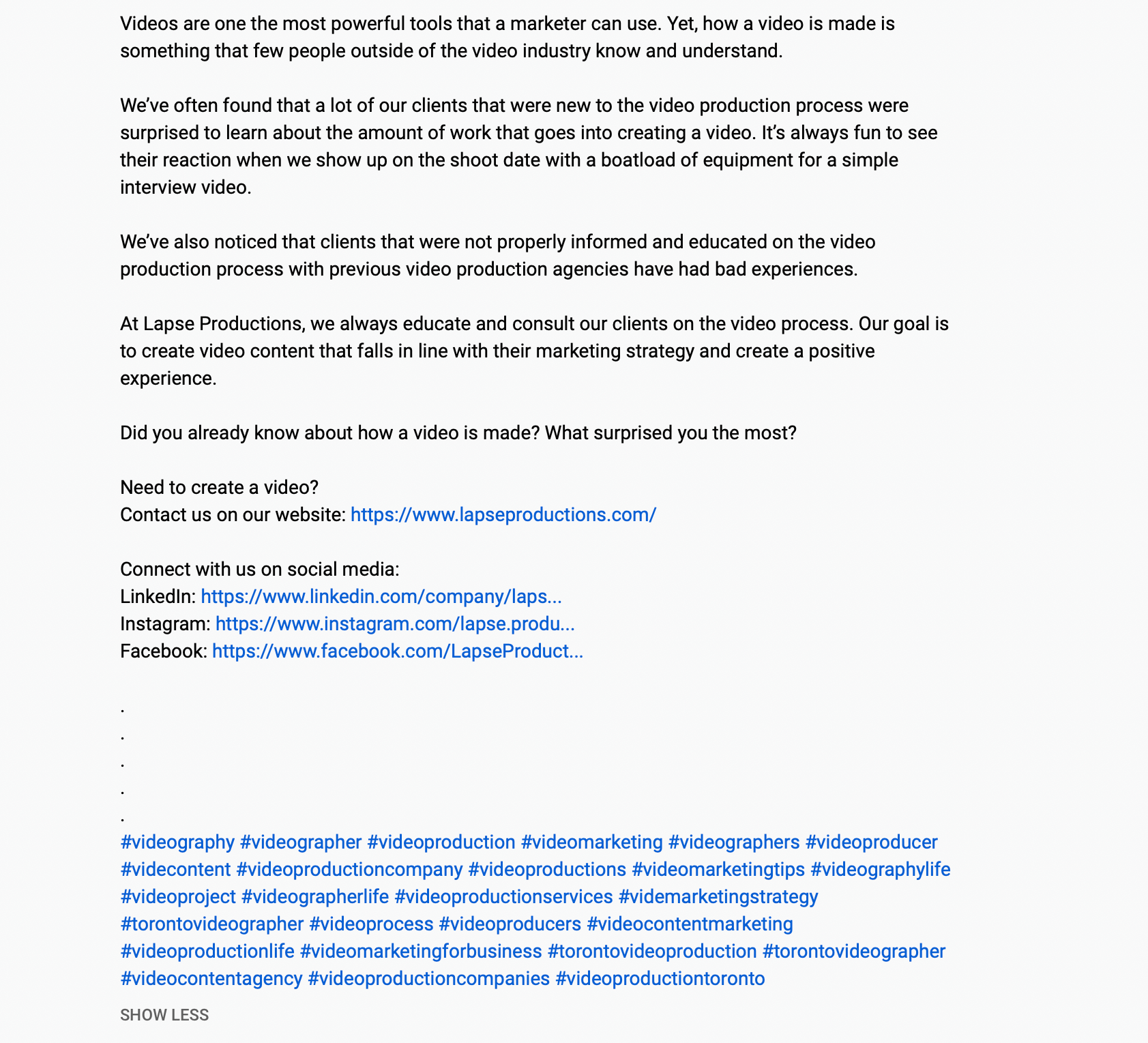
- Optimize the Description: Sound human, add a CTA, relevant keywords, marketing information, #hashtags, and timestamps.
- Create a Custom Thumbnail: Make it engaging and follow technical requirements like 1280×720 pixels, 16:9 ratio, and less than 2 MB.
- Use Appropriate Tags and Closed Captions: Be mindful of common misspellings and provide accurate captions.
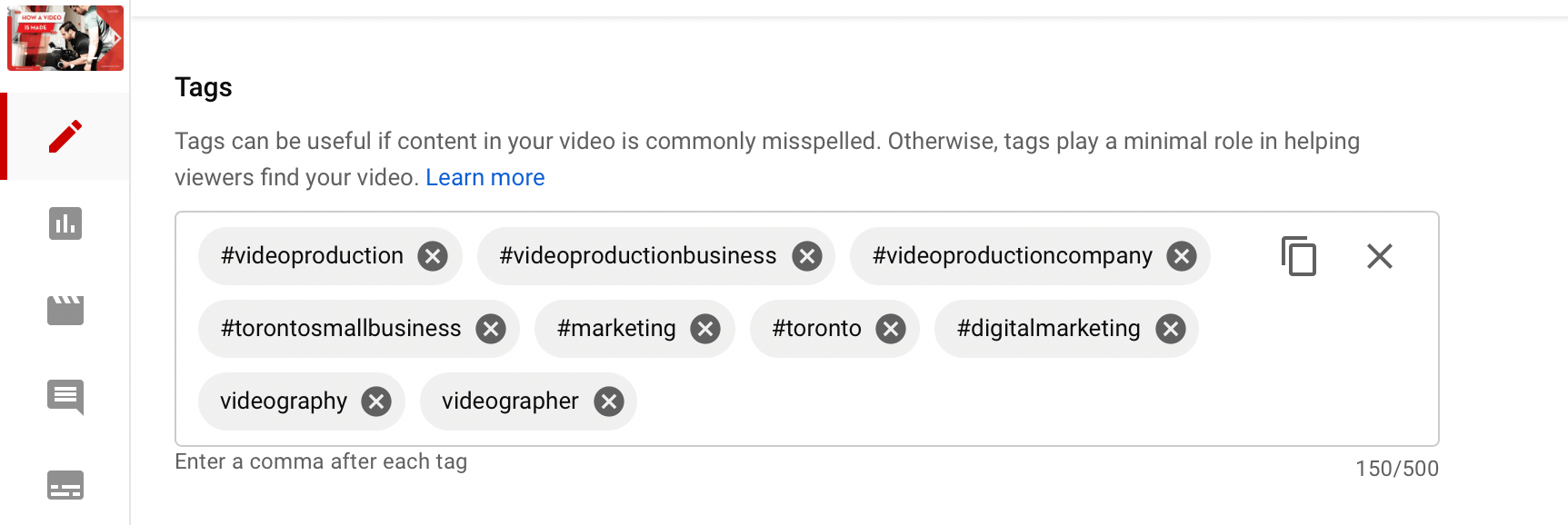
- Add Timestamps, Cards, and End Screens: Improve navigation and encourage viewers to watch more.
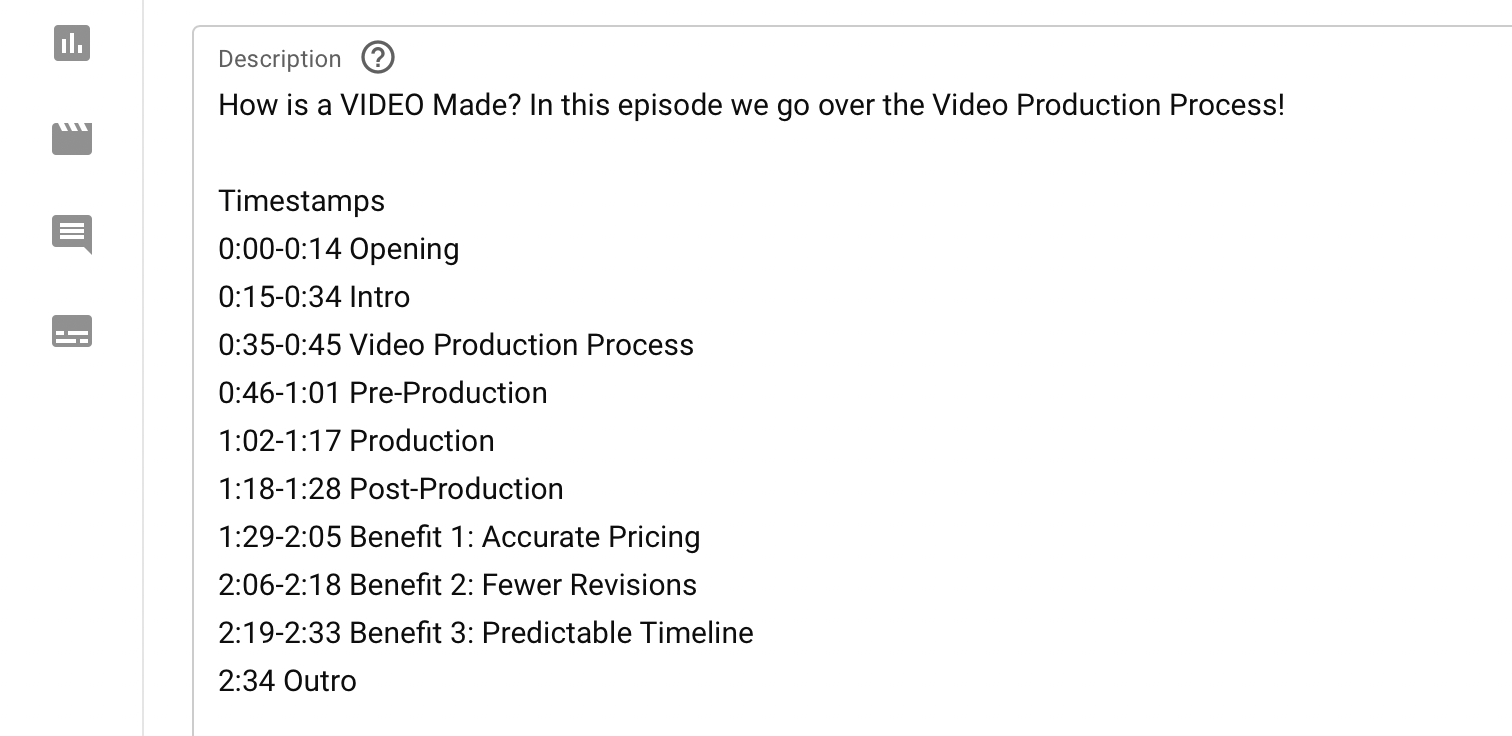
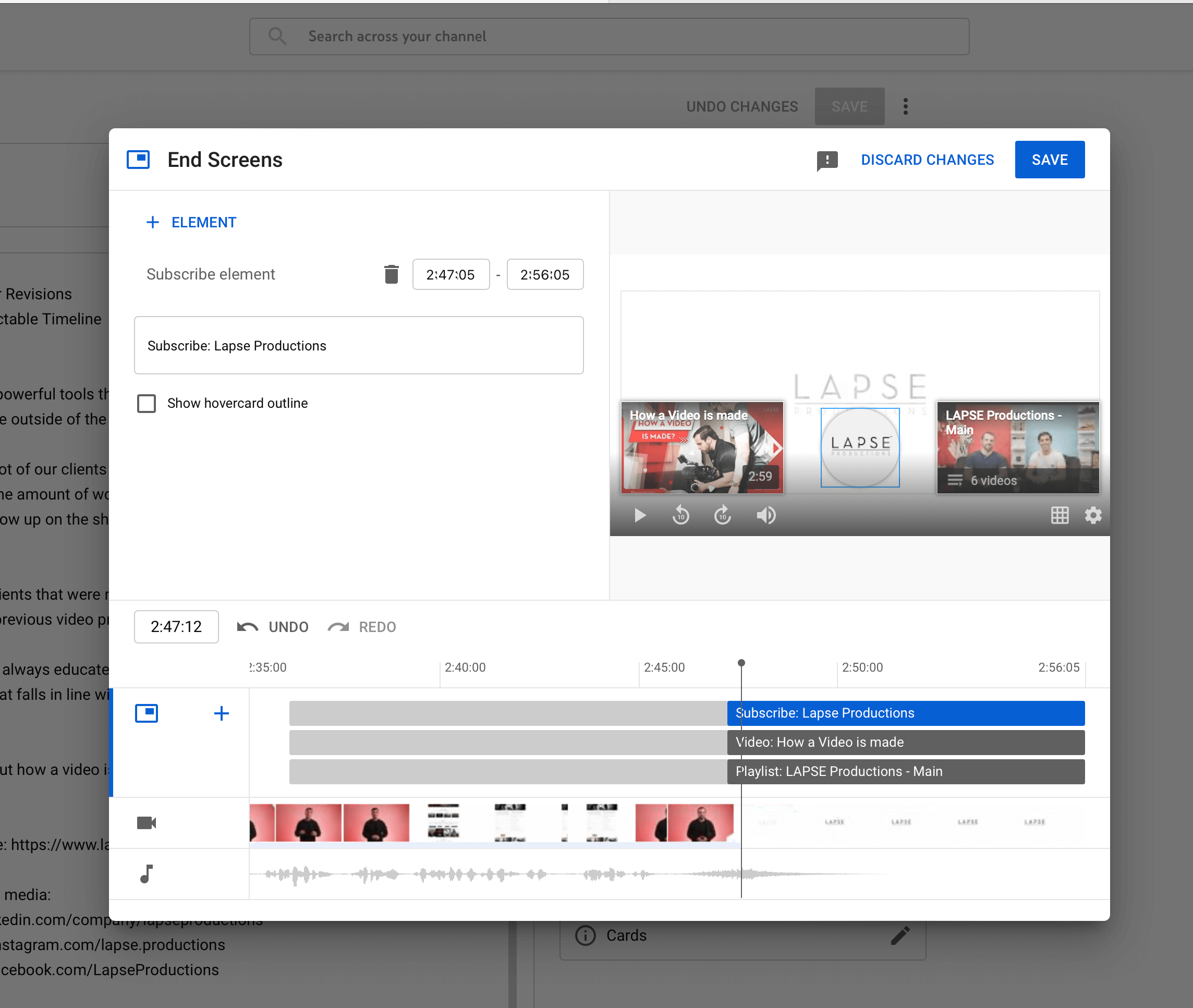
- Categorize Your Video: Group it with similar content.
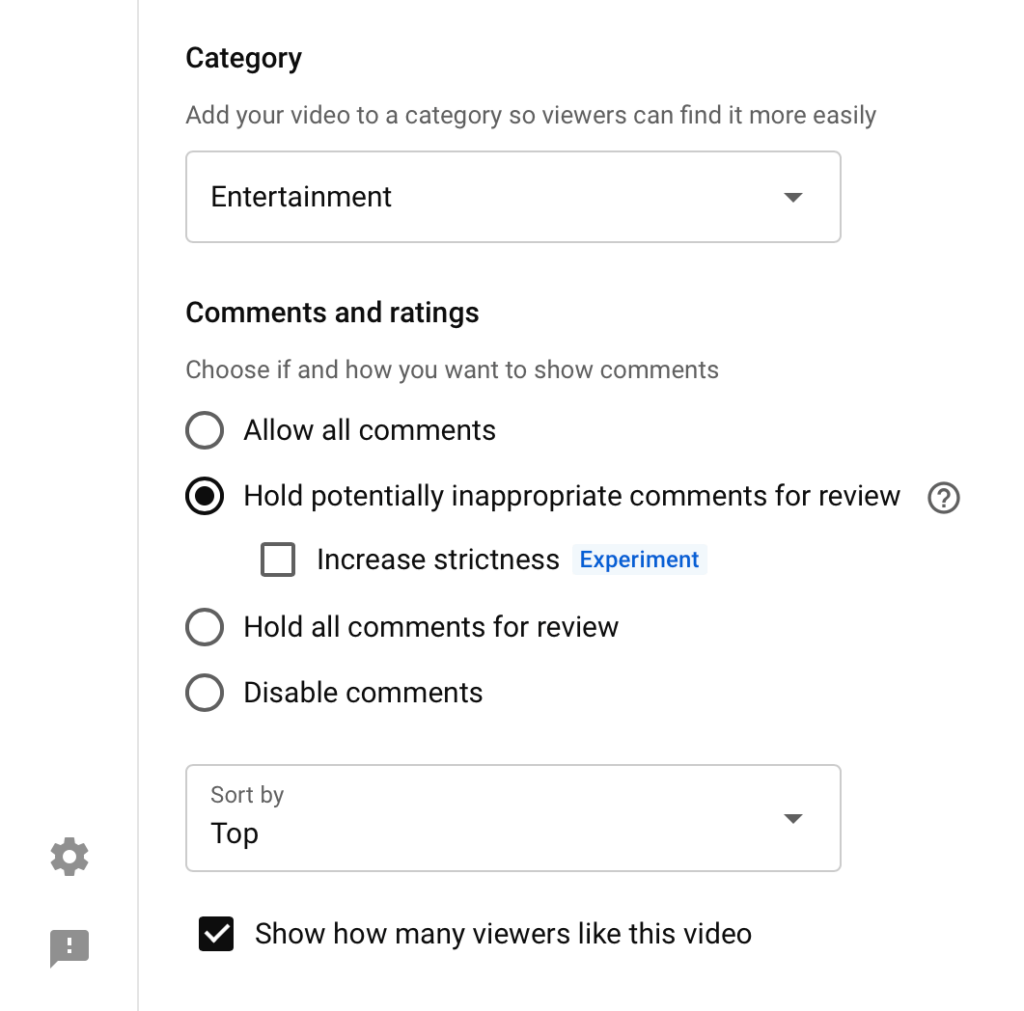
What To Do After Your Video is Live
Share On Social Channels: LinkedIn, Instagram, Facebook, Twitter.
Embed the Video: Increase your SEO on other platforms.
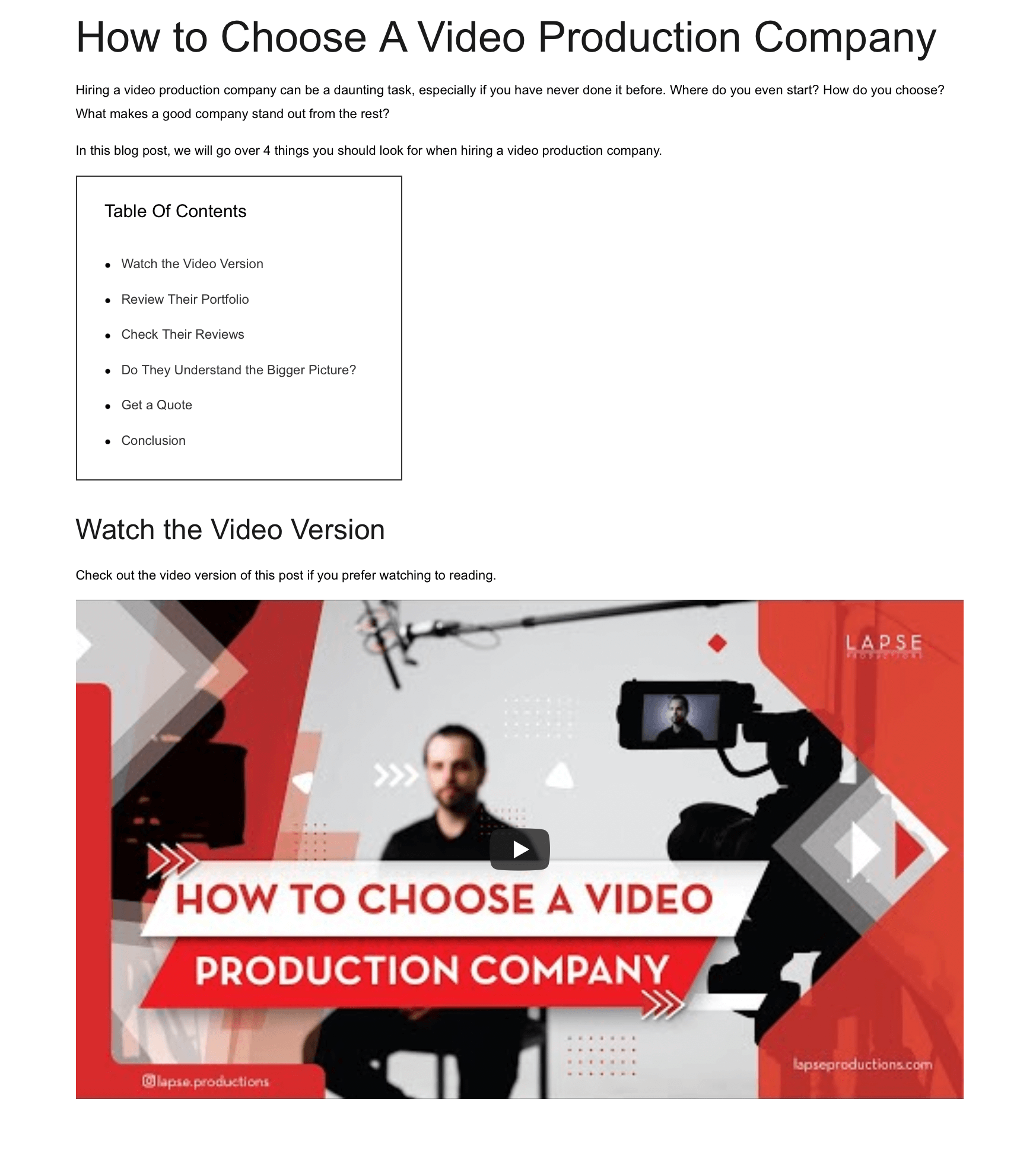
Monitor Performance: Use YouTube Analytics for insights.
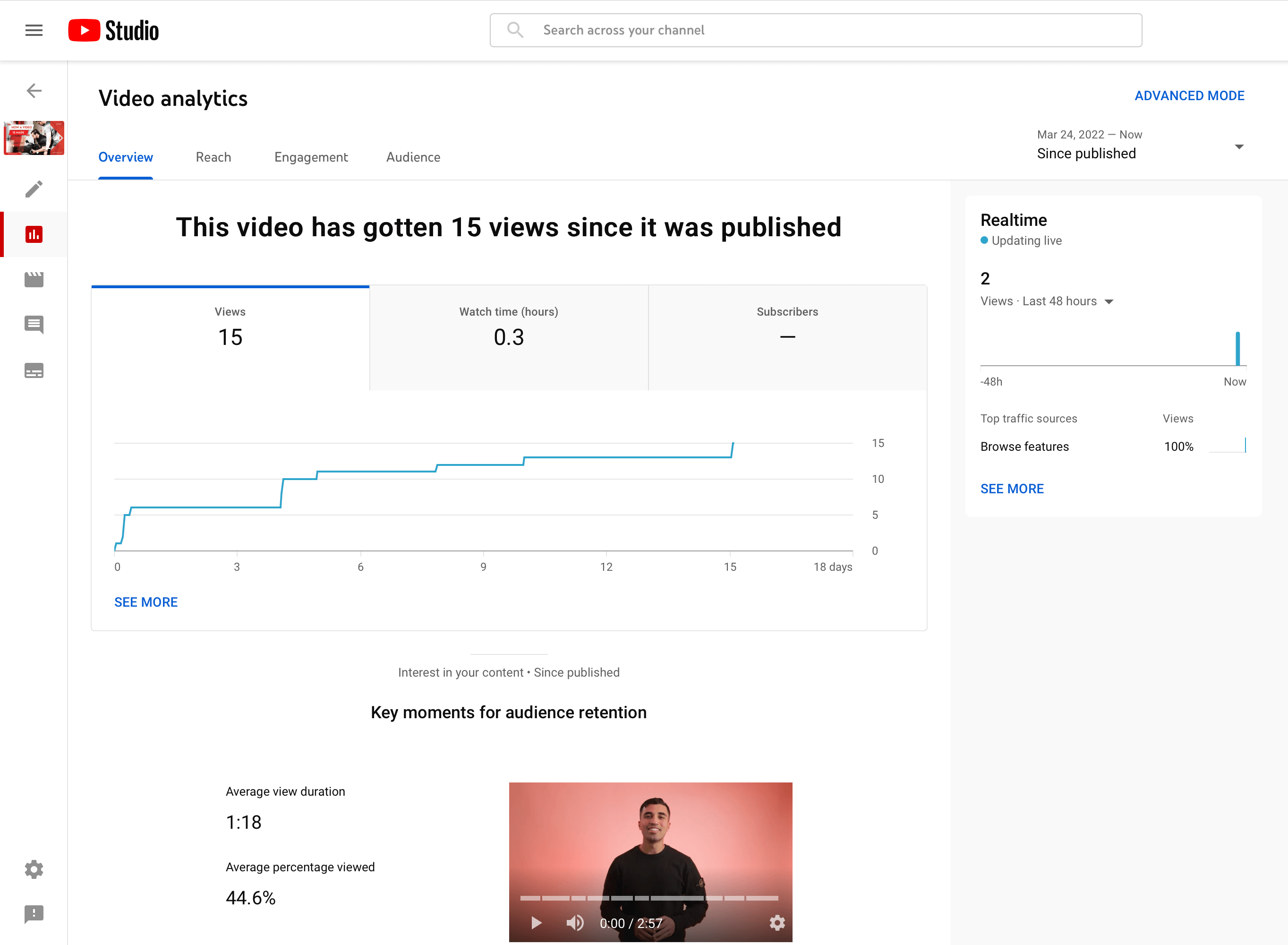
Create Your Video With LAPSE Productions
Optimizing your YouTube videos for search is an essential part of building your online presence. By understanding the ranking factors and following best practices, you can boost your videos to the top of the search results. Remember, SEO is a continuous process, so keep monitoring and adjusting as needed. If you need assistance, Lapse Productions is here to help. Let’s create your video today!
Let’s Create Your Video Today
If you’re looking for top-notch quality, industry expertise, dependability, and competitive pricing, don’t wait any longer. Contact us now for a quote and let’s get started on your project.

